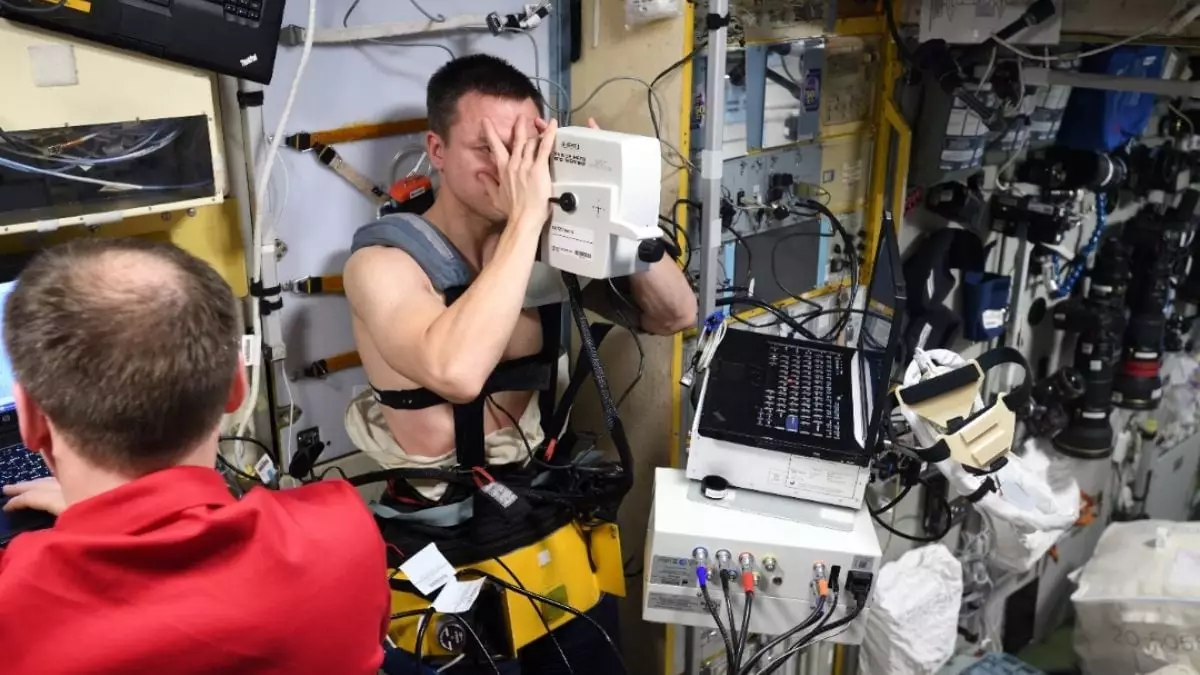The phenomenon of vision changes among astronauts aboard the International Space Station (ISS) is becoming an area of growing concern, especially as humanity sets its sights on deeper space missions like those to Mars. Recent studies reveal that approximately 70% of astronauts who have resided in microgravity for six to twelve months experience various ocular problems. This underscores a critical issue for the future of long-duration space travel, as these changes may impede astronauts’ ability to perform essential tasks, ultimately jeopardizing mission success.
Astronauts with spaceflight-associated neuro-ocular syndrome (SANS) report symptoms including swelling of the optic nerve, alteration in the shape of their eyes, and general vision impairment. The core cause of these conditions appears to be the redistribution of bodily fluids in microgravity, resulting in increased intraocular pressure that adversely affects eye structures. Although many astronauts return to baseline vision after their return to Earth, the lingering effects of SANS raise severe concerns that cannot be dismissed.
Insights from Recent Research
A study led by Santiago Costantino at the Université de Montréal delved deeper into this issue, analyzing the ocular conditions of 13 astronauts before and after their stints aboard the ISS. This research included participants from various countries, such as the United States, Europe, Japan, and Canada. An eye-opening revelation of the study was the documented decline in essential measures of ocular health: specifically, a 33% decrease in ocular rigidity and an 11% reduction in intraocular pressure. This data emphasizes the potential long-term changes that prolonged space travel might cause in astronauts’ vision.
Interestingly, the increase in choroidal thickness observed in some astronauts indicated a profound alteration in ocular health. Although SANS has been known since the early 2000s, its implications for astronauts’ operational capabilities during missions remain inadequately understood. Furthermore, reports suggest that similar symptoms have been recorded among Russian cosmonauts during their time on the Mir space station, indicating a systemic issue rather than isolated incidents.
Future Countermeasures and Research Directions
To mitigate the implications of SANS, various countermeasures are being actively studied. Researchers are exploring the efficacy of negative pressure devices, tailored pharmaceutical treatments, and specific nutritional plans designed to minimize the adverse effects of microgravity on vision. Identifying astronauts at a higher risk for developing severe ocular problems is crucial, as this can enable preventative measures during missions.
Furthermore, the work of Costantino suggests that understanding changes in the mechanical properties of the ocular system could provide critical biomarkers for early diagnosis and intervention of SANS. This could be revolutionary for ensuring the safety and efficacy of future deep-space missions.
As space exploration ventures towards more ambitious targets, agencies must prioritize astronaut health, particularly in regards to vision. This critical evaluation of the risks associated with prolonged spaceflight lays the groundwork for better protective measures and enhanced performance in the cosmos. The stakes are high, and the solutions for safeguarding the vision of our space pioneers will define the journey into the unknown.
While the prospect of exploring new frontiers is exhilarating, the reality of ocular health challenges in space cannot be overlooked. It is imperative for research and development to address these issues to ensure successful long-term missions beyond Earth’s orbit, where sight is as vital as any other system for operational success.


Leave a Reply